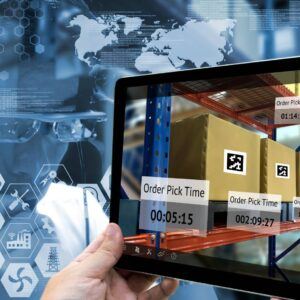B2B Focus on Supply Chain to Mitigate Risks

The pandemic created enormous disruption in global supply chains this past year forcing C- and board-level executives to focus on how to improve their logistic networks and mitigate risks. Organizations continue to experiment and explore how exactly to evolve these strategies. The new focus on what supply chains should look like is a valuable mark of progress within the B2B global marketplace.
“… there is a lot of debate as to what lessons should be drawn from it,” CEO David Shillingford told PYMNTS in an interview. “On one side of the argument, it will never happen again. On the other side, it might not happen exactly this way, but something like it will happen again — and things like it are happening every day.” As Shillingford explained, there is a spectrum of approaches to mitigating risk.
End-to-End Approach Emerges
Beyond business leaders finally emphasizing the importance of supply chain risks, they are now focusing on the supply chain from end-to-end. Historically, the B2B industry didn’t take a holistic approach when it came to the process of moving products to customers. Now this new perspective means driving visibility through the supply chain and increasingly including risk as part of that effort to boost transparency.
Look at the payments piece of the supply chain puzzle. Risk in this area can stem from a variety of sources, from external cyberattacks to delayed payments from vendors. And while digitization can be key to enhancing automation and boosting visibility into transactions, if risk mitigation efforts are not approached holistically, they will be limited.
“The challenge is to digitize things end-to-end,” said Shillingford. “If your payments are digitized, but the actions on either side of them or in parallel with them are not digitized, then you’re missing a lot of opportunity.”
Forecasting and Flexibility is Key to Success
While these revised supply chain risk management strategies can be complex, there are two key characteristics of a successful program: forecasting and flexibility. The ability for a company to forecast risks and the capability to be flexible when unpredictable events occur is key to success.
In areas like finance and payments, this means being able to predict financial stability and stresses along the supply chain. Taking proactive measures to mitigate this threat has become even more crucial because of volatility and the inability of traditional financial reporting cycles to present key information quickly and consistently enough. Thanks to technologies like predictive analytics, businesses now have a better opportunity to mitigate risk in the planning phase of supply chain operations.
But many businesses have learned that not everything is predictable, making it that much more important for an organization to be able to be flexible and resilient when a disruptive event occurs. Merchants should also have backup plans that allow them to quickly move about the ebbs and flows of the marketplace. Implementing these behaviors can be a formula for a more robust supply chain.
To Learn More About B2B Payments:
Contact us online or call 1-800-621-8931.
Subscribe to Card Talk
Our monthly newsletter delivers the latest payments news straight to your inbox


